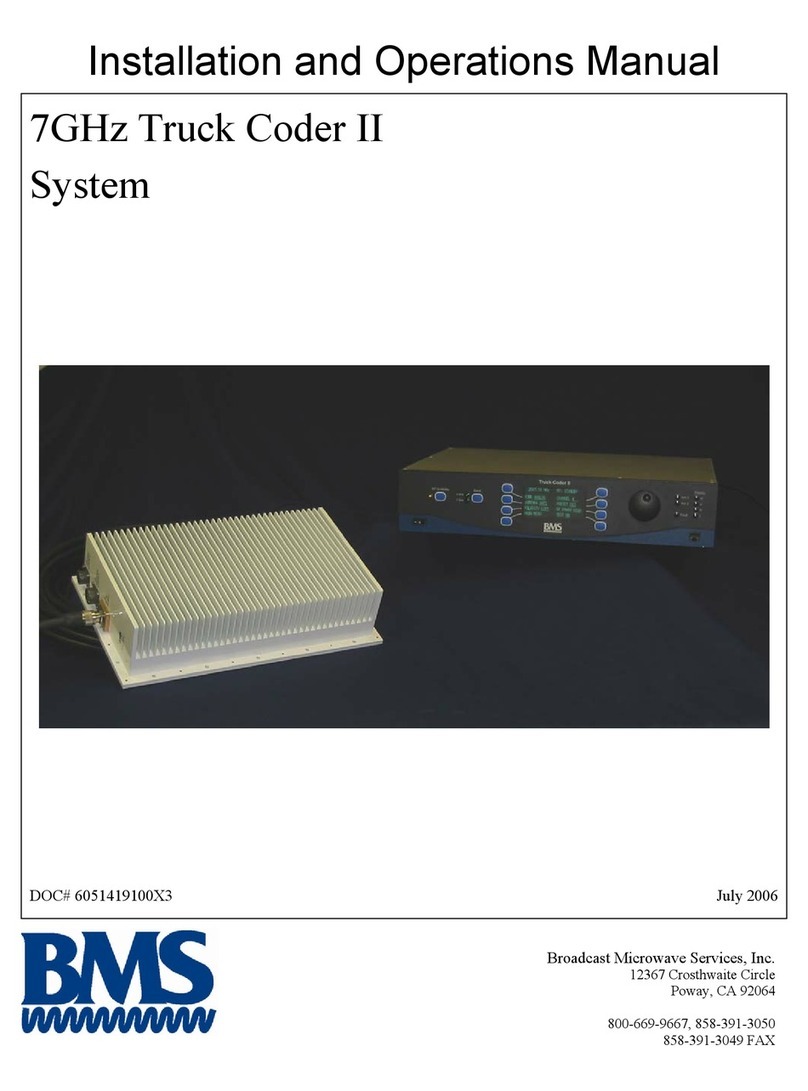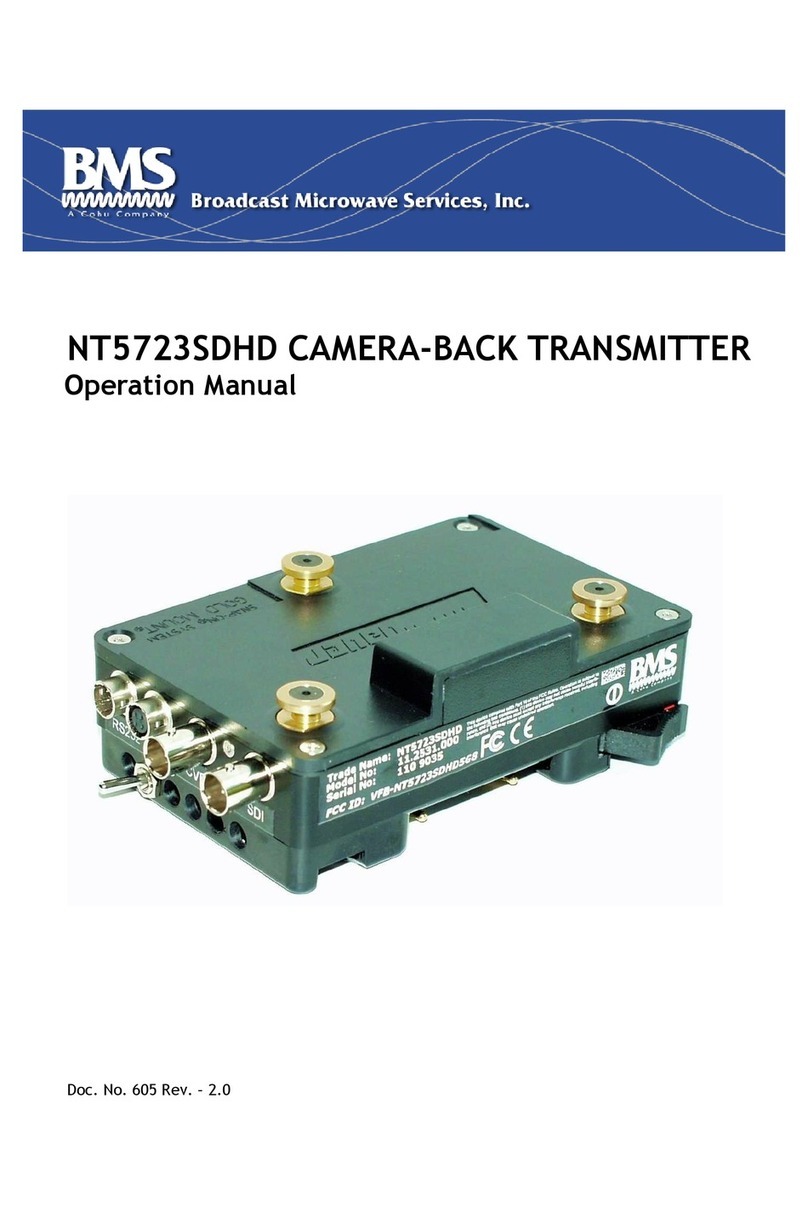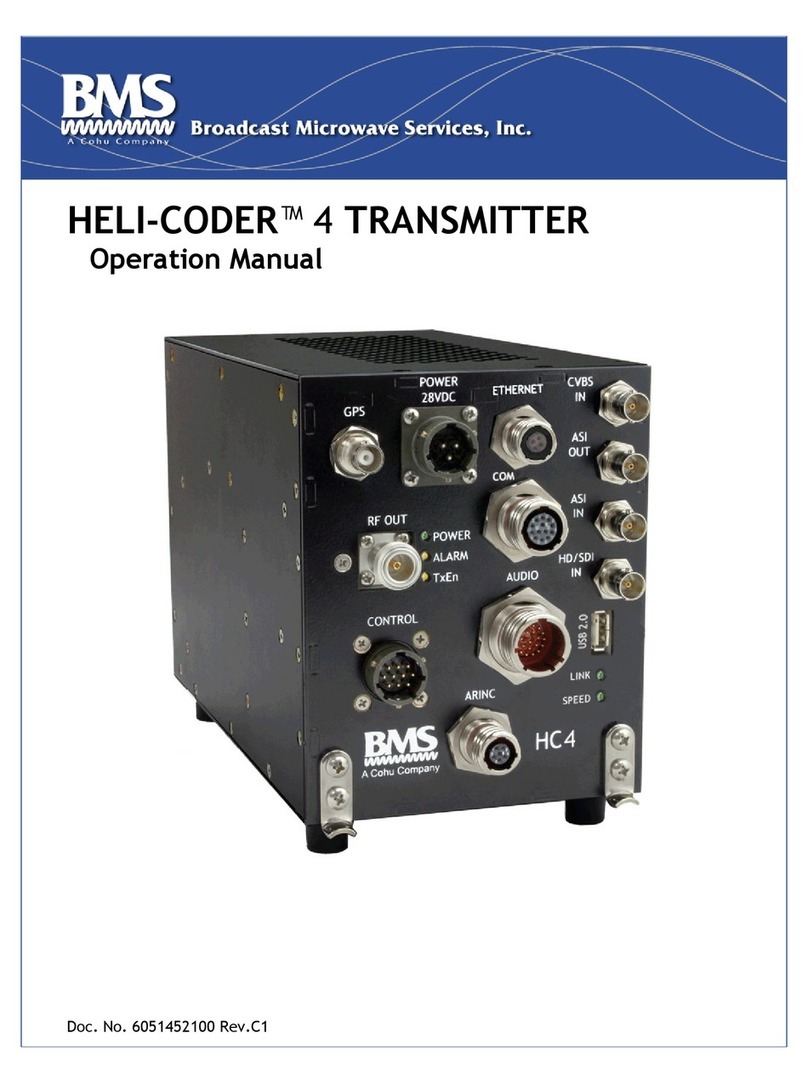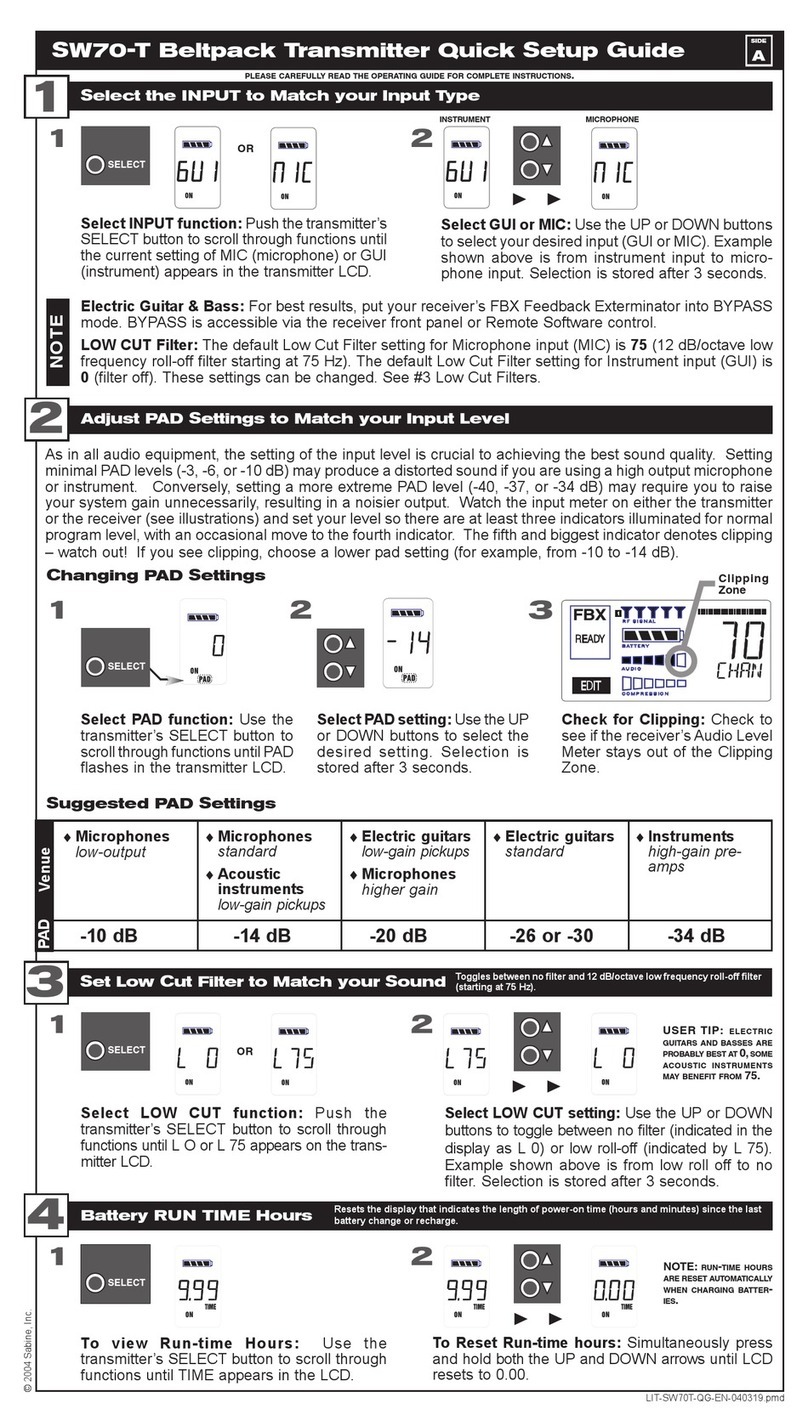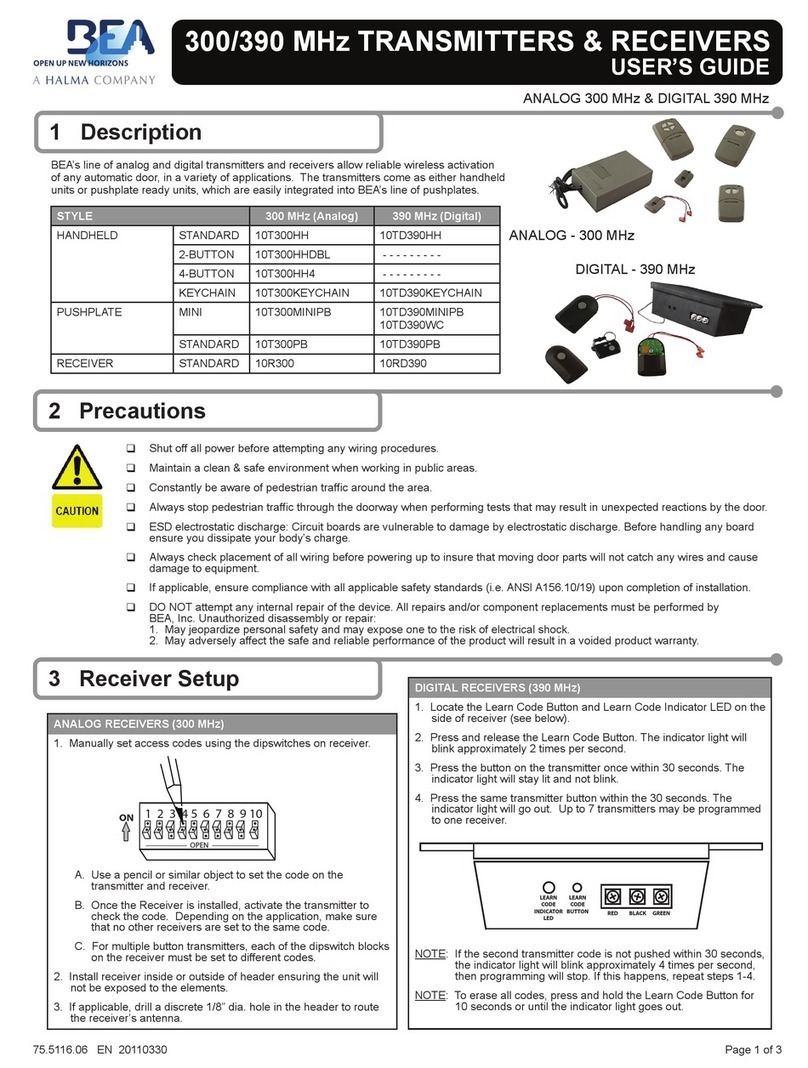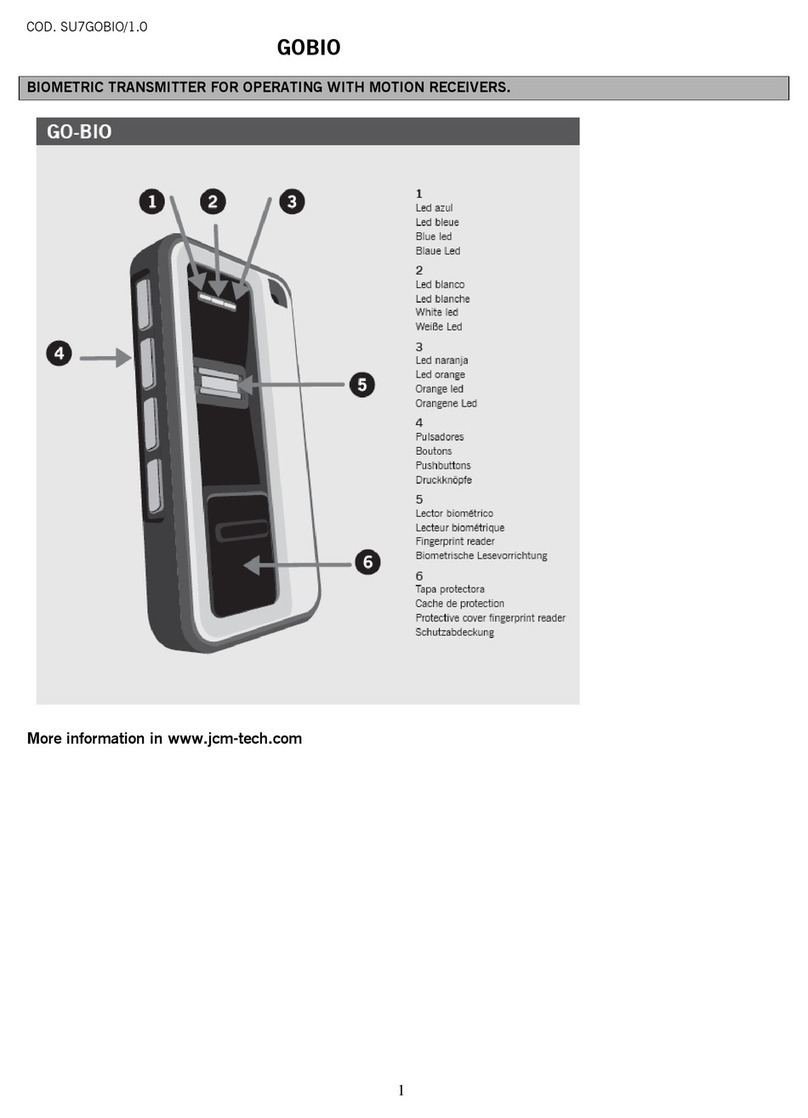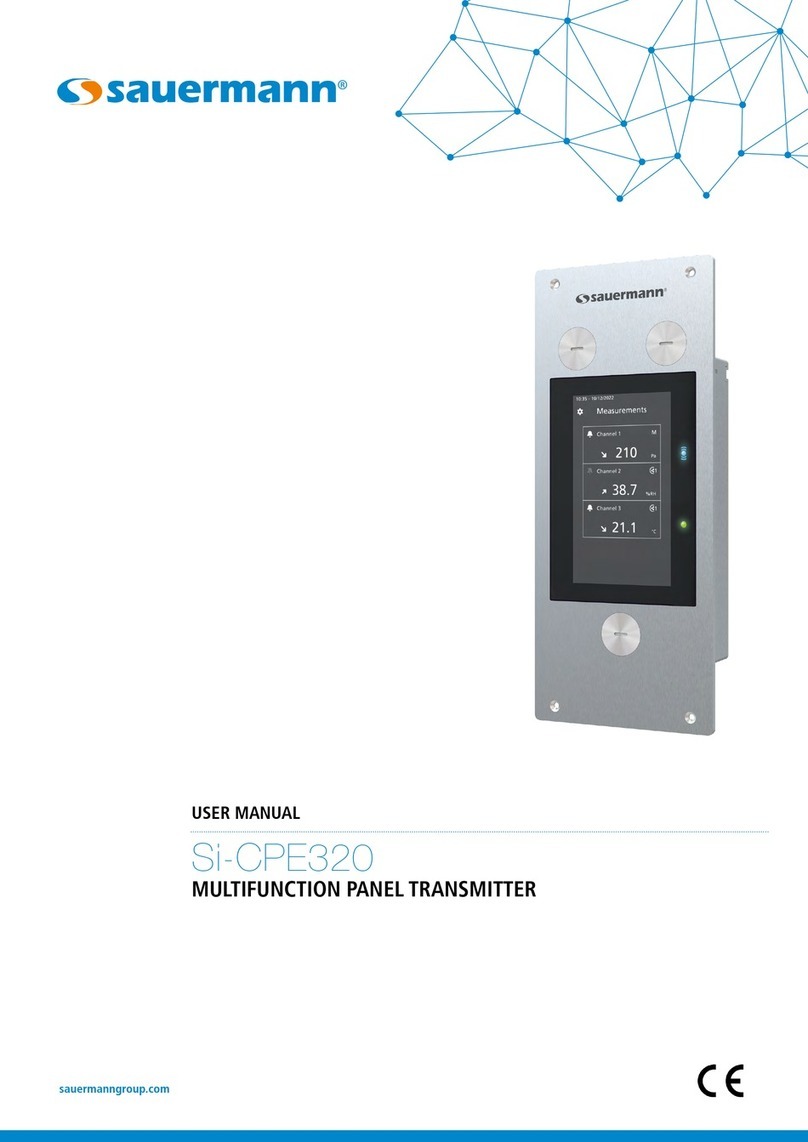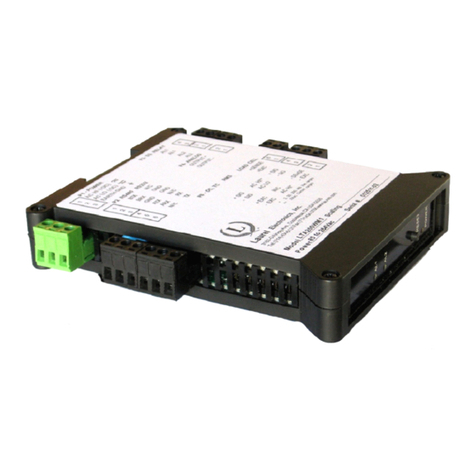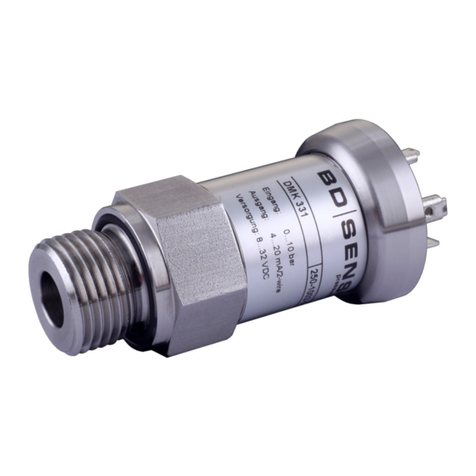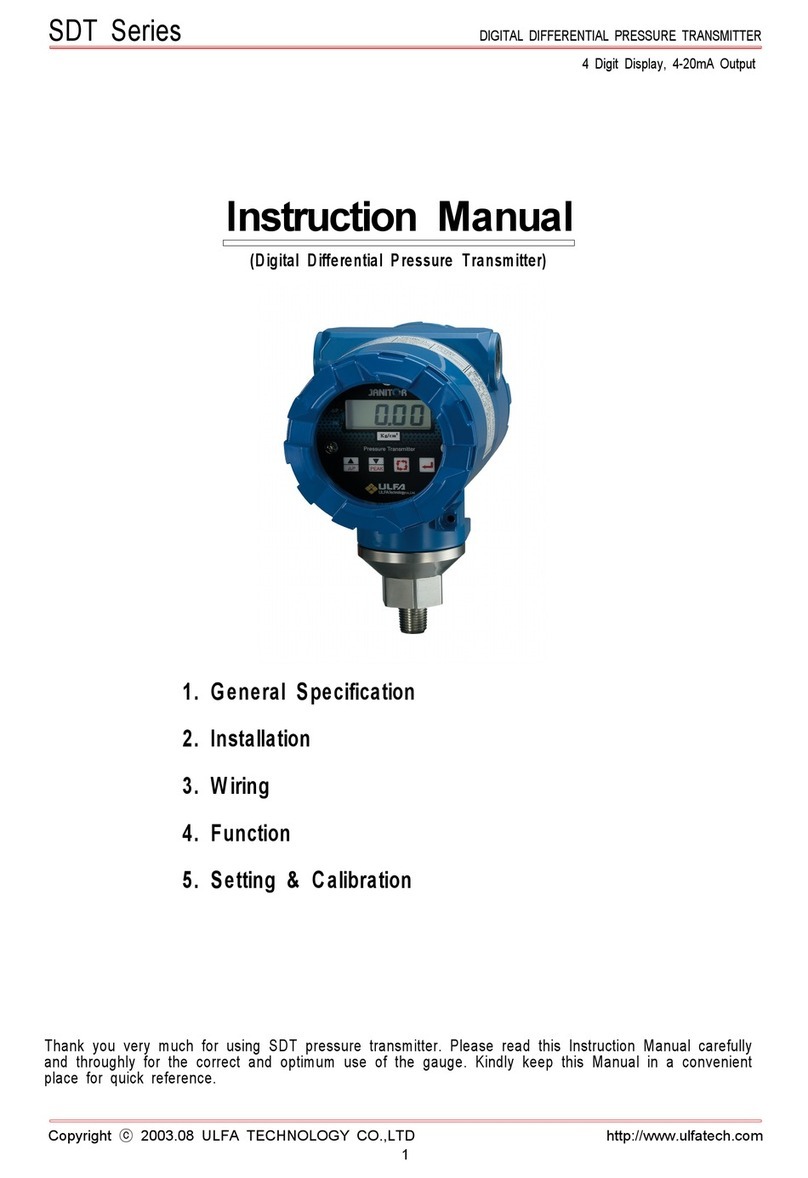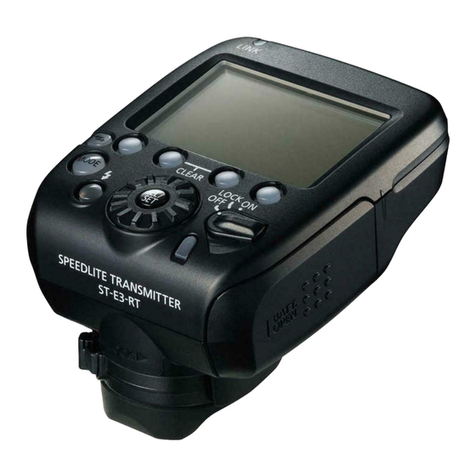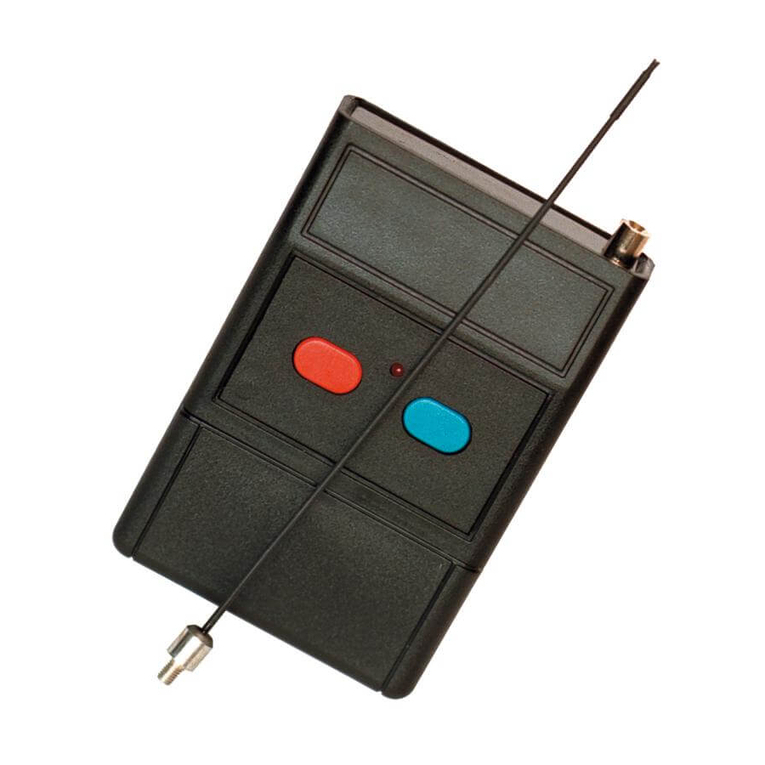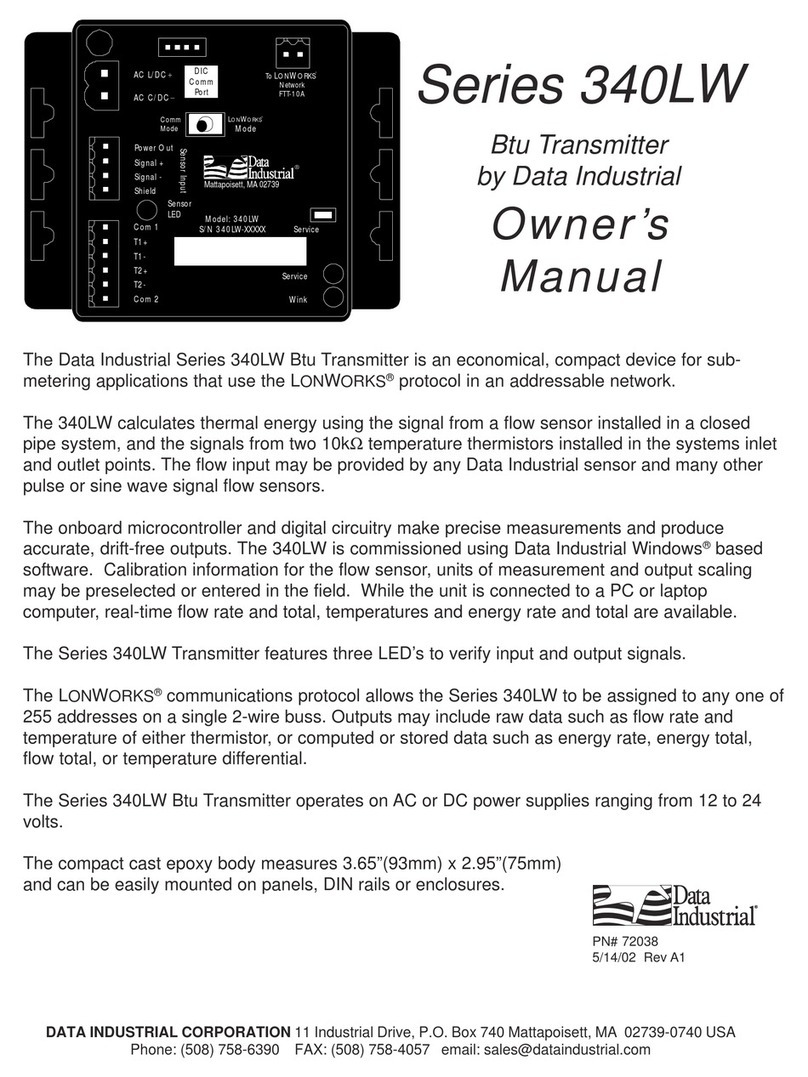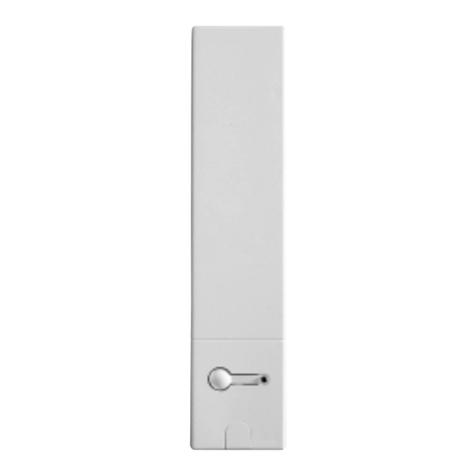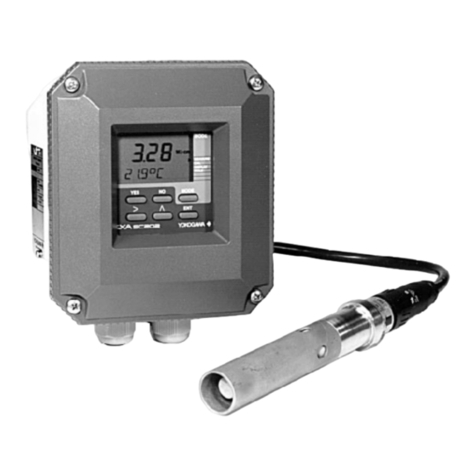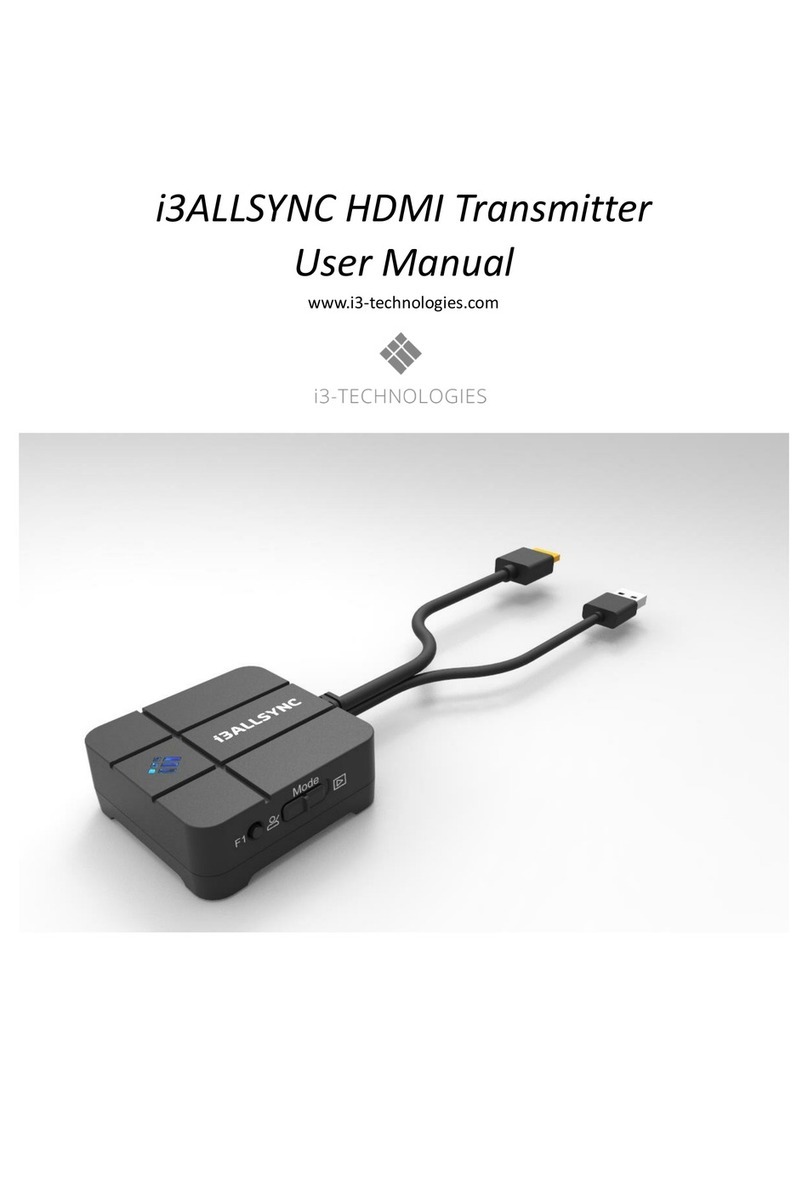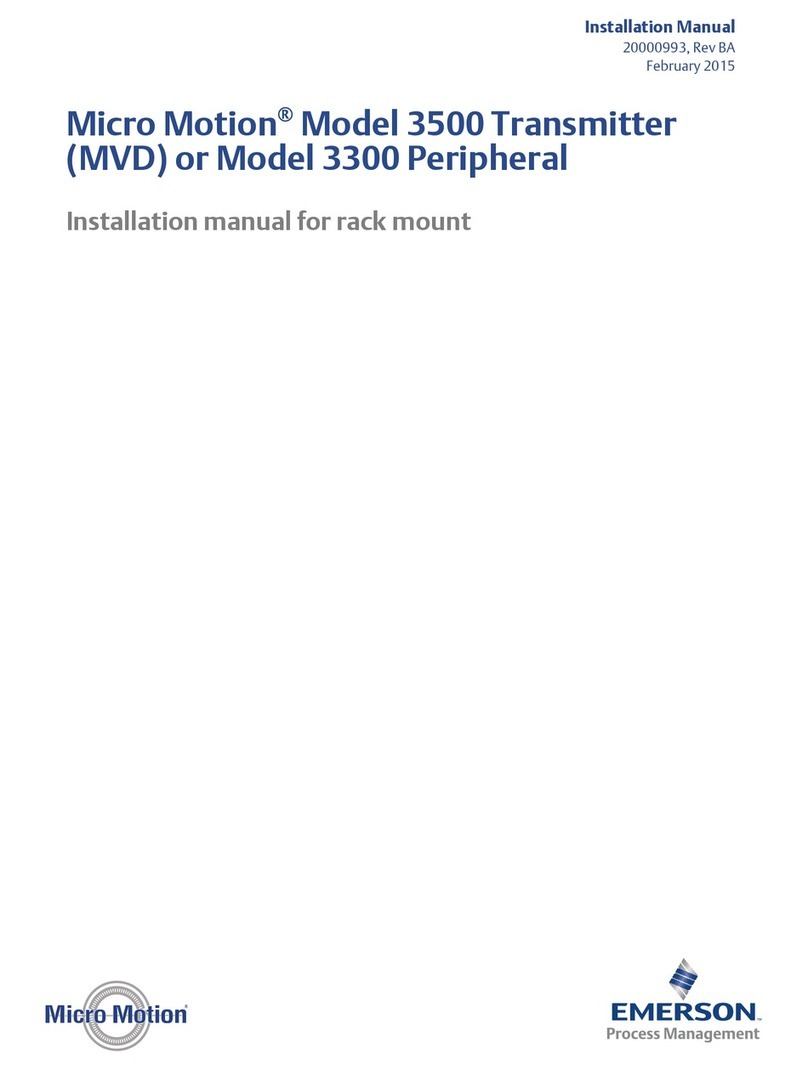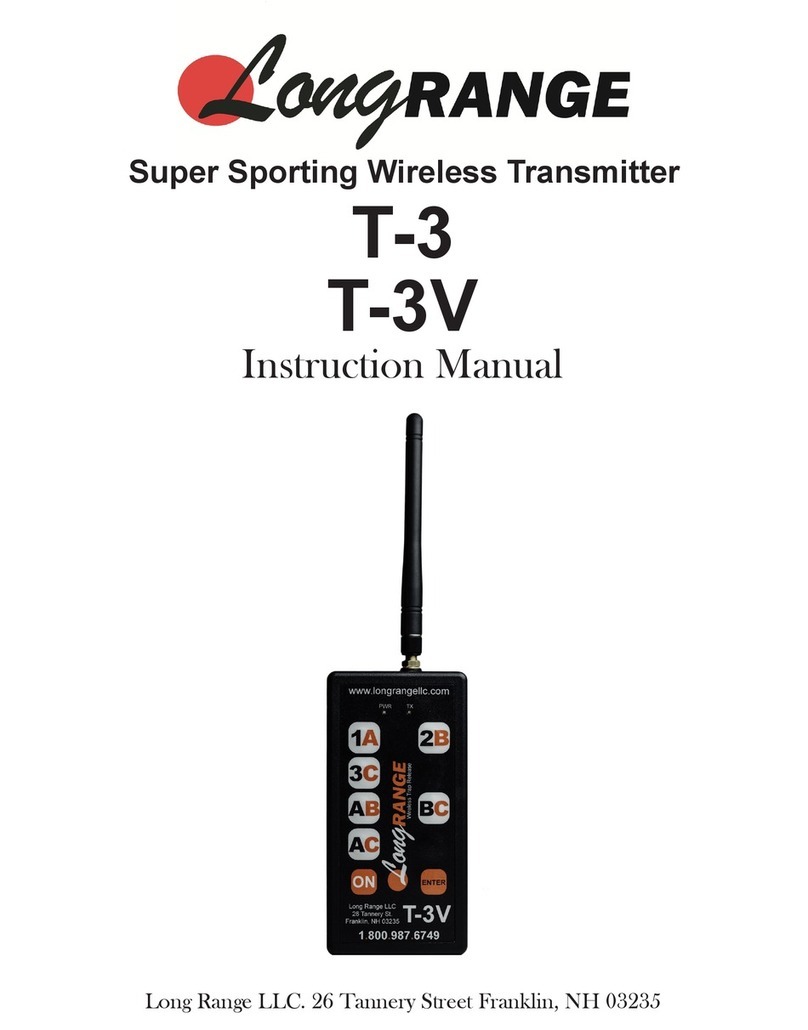BMS CT6020HD User manual

ENGLISH (UK)
REFERENCE GUIDE V. 1.3
CT6020HD

Preposition
Reference Guide: CT6020HD Page ii
March 09
List of Contents
Chapter 1: Introduction to the CT6020HD
Gives a general description of the equipment, main features and functions.
Identifies the controls, indicators and connectors on the front and rear
panels.
Chapter 2: Installing the Equipment
Provides a guide to the suitability of an installation and gives detailed
procedures for the preparation and installation of the equipment. Also
details the external connectors and provides important safet
information.
Chapter 3: Operating the Equipment Locall
Describes local control in detail. Provides the power up/power down
procedures and other general operating/control/set up procedures.
Chapter 4: Application note for wireless HD Camera’s
Describes the mounting of the CT6020HD on the Sony 1500 Camera
Annex A: List of Abbreviations
Annex B: Technical Specification

Preposition
Reference Guide: CT6020HD Page iii
March 09
Contents
Preposition
List of Contents.......................................................................................... ii
About this Reference Guide .........................................................................vi
Nomenclature ............................................................................................vi
Acknowledgements....................................................................................vii
General ................................................................................................vii
Registered Trademarks...........................................................................vii
Trademarks ..........................................................................................vii
Warnings, Cautions and Notes ................................................................... viii
Heed Warnings ..................................................................................... viii
Read Instructions ................................................................................. viii
Follow Instructions................................................................................ viii
Retain Instructions................................................................................ viii
EMC Compliance ...................................................................................... viii
Contact Information ...................................................................................ix
BMS Europe Customer Services................................................................ix
Technical Training................................................................................... x
Customer Services and Technical Training Postal Address ............................ x
Return of Equipment ............................................................................... x
Technical Publications.............................................................................. x
Chapters 1 to 4
1. Introduction to the CT6020HD.................................................................. 9
1.1 Preliminary Remarks.......................................................................... 9
1.2 Designation and P/N .......................................................................... 9
1.3 Description..................................................................................... 10
2. Installing the Equipment........................................................................ 11
2.1 Safety instructions .......................................................................... 11
2.3 Shut Down ..................................................................................... 13
3. Operating the Equipment....................................................................... 14
3.1 Multifunctional display ..................................................................... 14
3.2 Frequency input (1)......................................................................... 15
3.3 Resolution (2)................................................................................. 16
3.4 Framerate (3)................................................................................. 17
3.5 Modulation (4) ................................................................................ 18
3.5 Latency (5) .................................................................................... 19
3.6 Audio Input (6) ............................................................................... 19
3.7 Line Gain (7) .................................................................................. 20
3.8 Mic Gain (8) ................................................................................... 20

Preposition
Reference Guide: CT6020HD Page iv
March 09
3.9 MIC Phantom (9) ............................................................................ 21
3.10 Data Freq (10) (optional) ............................................................... 22
3.11 Output Power (11)......................................................................... 22
3.12 Contrast (12)................................................................................ 23
3.13 Display OFF (13) ........................................................................... 23
3.14 Software (14) ............................................................................... 24
3.15 Status* (15) ................................................................................. 24
3.16 Encoder FW* (16) ......................................................................... 25
4. APPLICATION NOTE FOR WIRELESS HD CAMERAS …………………………………….26
4.1 Introduction ....................................................................................... 26
4.2 Mounting instructions for CT6020HD on the Sony 1500 camera ................ 27
Appendix A List of Abbreviations
Appendix B Technical Specification
B.1… Compliance .................................................................................... B 1
B.1.1 Safety ..................................................................................... B 1
B.1.2 EMC ........................................................................................ B 1
B.1.3 Shock and Vibration .................................................................. B 2
B.1.4 CE Marking .............................................................................. B 2
B.1.5 FCC Marking ............................................................................. B 2
B.2 Technical Specifications .................................................................... B 3

Preposition
Reference Guide: CT6020HD Page v
March 09
About this Reference Guide
This Reference Guide provides instructions and information for the
installation and operation of the CT6020HD.
This Reference Guide should be kept in a safe place for reference for the
life of the equipment. It is not intended that this Reference Guide will be
amended by the issue of individual pages. Any revision will be by a
complete reissue. Further copies of this Reference Guide can be ordered
from the address shown on page viii. If passing the equipment to a third
party, also pass the relevant documentation.
Issues of this Reference Guide are listed below:
Issue Date Build Version Comments
1 December 2008 1.0 Initial release.
1 Januar 2009 1.1 Update
1 March 1.2 Notes added
Note…
The Build Version in the table refers to an overall number which
encompasses all the various software/firmware versions of video,
audio, etc in the device.

Preposition
Reference Guide: CT6020HD Page vi
March 09
Acknowledgements
General
All best endeavors have been made to acknowledge registered trademarks
and trademarks used throughout this Reference Guide. Any notified
omissions will be rectified in the next issue of this Reference Guide. Some
trademarks may be registered in some countries but not in others.
Registered trademarks and trademarks used are acknowledged below and
marked with their respective symbols. However, they are not marked
within the text of this Reference Guide.
Registered Trademarks
AC 3
®
, Dolby Digital
®
and Pro Logic
®
are registered trademarks of Dolby
Laboratories Licensing Corporation.
Musicam
®
is a registered trademark of Thomson and Télédiffusion de
France (TDF), Europe, and is a registered trademark of CCS (now Musicam
USA Incorporated), USA.
Ethernet
®
is a registered trademark of Xerox Corporation.
XILINX
®
is a registered trademark of Xilinx Inc.

Preposition
Reference Guide: CT6020HD Page vii
March 09
Warnings, Cautions and Notes
Heed Warnings
All warnings on the product and in the operating instructions should be
adhered to. The manufacturer can not be held responsible for injuries or
damage where warnings and cautions have been ignored or taken lightly.
Read Instructions
All the safety and operating instructions should be read before this product
is operated.
Follow Instructions
All operating and use instructions should be followed.
Retain Instructions
The safety and operating instructions should be retained for future
reference.
Warnings…
Warnings give information which, if strictl observed, will
prevent personal injur or death, OR DAMAGE TO PERSONAL
PROPERTY OR THE ENVIRONMENT. The are boxed and
shaded for emphasis, as in this example, and are placed
immediatel preceding the point at which the reader
requires them.
Cautions...
Cautions give information which, if strictly followed, will prevent
damage to equipment or other goods. They are boxed for emphasis,
as in this example, and are placed immediately preceding the point
at which the reader requires them.
Notes...
Notes provide supplementary information. They are highlighted for
emphasis, as in this example, and are placed immediately after
the relevant text.
EMC Compliance
This equipment is certified to the EMC requirements detailed in Anne B,
Technical Specification. To maintain this certification, only use the leads
supplied or if in doubt contact Customer Services.

Preposition
Reference Guide: CT6020HD Page viii
March 09
RF Exposure Info:
For body worn operation, device has been tested and meets FCC RF
exposure guidelines when used with an accessory that contains no metal
and that positions device a minimum of 20cm from the body. Use of other
accessories may not ensure compliance with FCC RF exposure guidelines.
Technical Training
Training Courses
BMS Europe provides a wide range of training courses on the operation
and maintenance of our products and on their supporting technologies.
BMS can provide both regularly scheduled courses and training tailored to
individual needs. Courses can be run either at your premises or at one of
our dedicated training facilities.
Where to Find Us
For further information on BMS Europe training program please
contact us:
International Telephone: + 49 6124 7239 00
International Facsimile + 49 6124 7239 29
Customer Services and BMS Europe Postal Address
BMS Europe GmbH & Co. KG
Schwalbacher Straße 12
65321 Heidenrod – Kemel
Germany
Return of Equipment
If you need to return equipment for repair, please contact
Tel: + 49 6124 7239 00
Fax: + 49 6124 7239 29
BMS Europe GmbH & Co. KG
Schwalbacher Straße 12
65321 Heidenrod – Kemel
Germany

Chapter 3: Options and Upgrades
Reference Guide: CT6020HD Page 9
March 09
1. Introduction to the CT6020HD
1.1 Preliminar Remarks
This manual is provided for users and operators of the CT6020HD Transmitter. It is
intended to support the installation, operation, maintenance and daily use of the unit
in general.
The manual should be kept with the CT6020HD Transmitter and may be consulted
when questions occur. Should problems remain after you have read the manual
carefully or if you have any further questions concerning the functionality or operation
of the Transmitter, please contact Customer Service.
1.2 Designation and P/N
Designation CT6020HD
Frequency range P/N
6.425 – 6.525 GHz 11.2456.000

Chapter 3: Options and Upgrades
Reference Guide: CT6020HD Page 10
March 09
1.3 Description
General Information on D-ENG (Digital Electronic News Gathering)
The introduction of the DVB standard established the basis for digital broadcast video
transmission making efficient use of the available bandwidth. Powerful compression
algorithms allow a reduction in the amount of data to be transferred, while
maintaining the high quality standards for video and audio signals used in broad
casting applications. New modulation techniques and error correction algorithms
ensure a secure signal transmission even when the transmission conditions are poor.
The DVB T standard was established for terrestrial digital TV broadcasting, in
particular considering the difficult conditions of radio transmission. The highly efficient
OFDM multicarrier modulation procedure enables transmission without interference
even under multipath propagation conditions occurring with non directional
transmission or reception. Practical experience soon has proved that the DVB T
standard guarantees ruggedness of transmission to an extent even allowing mobile
reception.
Increasing miniaturization, in particular of MPEG encoders and OFDM modulators,
enables using the DVB T standard for mobile portable transmission systems.
Previous analog FM systems were adversely affected by signal reflections directly
resulting in video and audio interferences. Such effects do not occur when the digital
ENG system (D ENG) is deployed. Even mobile transmission from moving vehicles or
the use of omni directional antennas on the transmitting or receiving side does not
impair the picture or sound quality at all, opening a completely new range of
applications in TV production and news gathering.
Video Inputs
The CT6020HD accepts only HDSDI and SDI information at the input:
•SDI BNC(f)
OFDM (Orthogonal Frequenc Division Multiplex) Modulator
The digital data signal for wireless transmission is processed by the OFDM Modulator
and following IQ Modulator. The OFDM modulation procedure has a major impact on
the transmission properties and was specifically developed for terrestrial radio
transmission.
User interface
The integrated Multifunctional Display allows easy configuration of the device. The
current Software and firmware version can also be displayed.
Linear Power Amplifier
The linear power amplifier amplifies the output signal of the Modulator to an output of
about 200 mW (+23 dBm). The output port is located on top of the device.

Chapter 3: Options and Upgrades
Reference Guide: CT6020HD Page 11
March 09
2. Installing the Equipment
2.1 Safet instructions
Warning
The regulations of VDE0100 must be observed for
installation and operation of the unit.
Caution
•Establish all other connections before starting the unit by
connecting it to 12VDC. Essential, a valid video signal must be
connected to the desired input before power on the CT6020HD.
•When you connect the CT6020HD as described in the following
sections, make sure that the "Caution" instructions given there
are observed.
•Make sure that there is sufficient air circulation to ensure
adequate cooling of the unit.
External forced ventilation may be required if the unit is installed
in a rack or cabinet.

Chapter 3: Options and Upgrades
Reference Guide: CT6020HD Page 12
March 09
2.2 Connectors
Figure 1 Input connector of the CT6020HD
RF Connector
The RF output signal of the Low Power Amplifier is fed out at the N(f) connector on
top of the unit.
The CT6020HD provides RF output of about 200 mW (+23dBm).
Connecting Signal Sources
The Video signal supplied by the camera has to be applied to the HDSDI BNC(f)
connector of the transmitter.
The Audio signal supplied by the camera has to be applied to the Audio in 5pol Lemo
connector of the transmitter.
Connecting the RF Output
An omni directional antenna with N(m) connector can be directly mounted at the RF
out socket.
Connecting the UHF Data Input (optional)
An UHF antenna with SMA(m) connector can be directly mounted at the UHF in
socket.

Chapter 3: Options and Upgrades
Reference Guide: CT6020HD Page 13
March 09
Connecting the 12VDC Suppl Voltage
Caution
When using a battery or power pack, make sure that the minimum
supply current is at least 3A and the output voltage matches the
input voltage range of the CT6020HD.
Failure to comply with these requirements ma cause fatal
damage to the battery/power pack and/or CT6020HD.
Batter Powered Operation of the CT6020HD
Many types of batteries are available on the market and we tried to support the best
ones.
2.3 Shut-Down
Caution
To shut down the unit, first disconnect it from the 12VDC supply
voltage.
After disconnection from the supply voltage by removing the battery or disconnecting
the 12VDC supply cable, the other connecting cables can be removed from the unit.

Chapter 4: Operating the Equipment
Reference Guide: CT6020HD Page 14
March 09
3. Operating the Equipment
3.1 Multifunctional displa
During start up the transmitter is in a self test mode. After the self test the
transmitter’s name is displayed before the display permanentlyshows the current
frequency.
Current transmission frequency
UHF Data Receive
Quality
6500 MHz
(2) Down-Button
(1) Up-Button (3) Select-Button
Display

Chapter 4: Operating the Equipment
Reference Guide: CT6020HD Page 15
March 09
The automatic COFDM setup is very easy to handle.
When the Enter Button is pressed and held for approximately 2 seconds the setup
menu is accessible:
Menu structure as follows:
(1) FREQUENCY
(2) RESOLUTION
(3) FRAME RATE
(4) MODULATION
(5) LATENCY
(6) AUDIO INPUT
(7) LINE GAIN
(8) MIC GAIN
(9) MIC PHANTOM
(10) DATA FREQ
(11) OUTPUT POWER
(12) CONTRAST
(13) DISPLAY OFF
(14) SOFTWARE
(15) STATUS*
(15) ENCODER FW* (after a re-start please reset this option)
Use Up and Down button to navigate through this menu. To activate a sub menu
press Enter button for 2 seconds.
To exit all sub menus press Enter button.
3.2 Frequenc input (1)
At the frequency menu the current frequency is displayed.
To change the frequency press Enter button for 2 sec.
6500
MHz
FREQUENCY

Chapter 4: Operating the Equipment
Reference Guide: CT6020HD Page 16
March 09
The inverted digit displays the current changeable position of the frequency. By use of
Up and Down button the inverted digit can be changed, digit by digit. To confirm a
change and switch to the next position of the frequency press Enter button and
continue with the next digit. To save the changed frequency and leave this sub menu
press Enter button after all digits of the frequency are set.
3.3 Resolution (2)
In the sub menu “Resolution” the desired resolution of your transmitter can be
chosen.
Four options for resolution are available. For proper selection, please check the video
output of your camera.
•SD
•720p
•1080i
•1080p
To edit the resolution sub menu press Enter Button for 2 seconds.
Use the Up and Down Buttons for navigation and select the desired modulation by
pressing the Enter Button.
To exit this submenu press Enter Button.
6500
MHz
FREQUENCY

Chapter 4: Operating the Equipment
Reference Guide: CT6020HD Page 17
March 09
3.4 Framerate (3)
After setting the resolution (1080p/1080i/720p/SD) it is important to set the correct
corresponding frame rate.
Please check, at all costs, which HD output signal, which resolution the video signal
has and which frame rate (1080p/1080i/720p) the camera is set to. A list of the
resolution and corresponding frame rates is added below.
The following Frame rates are available:
•23,98 Hz (1080p)
•24 Hz (1080p)
•24 PsF (1080p)
•50 Hz (1080i/720p/SD)
•59,94 Hz (1080i/720p/SD)
•60 Hz (1080i/720p/SD)
To edit the frame rate sub menu press Enter Button for 2 seconds.
Use the Up and Down Buttons for navigation and select the desired frame rate by
pressing the Enter Button.
To exit this submenu press Enter Button.
Note
With PsF, a progressive frame is sliced into two "segments", with
the odd lines in one segment and the even lines in the other
segment. This allows for a progressive picture to be processed
through the same electronic circuitry that is used to store, process
and route interlaced video. Technically, progressive segments are
equivalent to interlaced fields, but unlike native interlaced video,
there is no motion between the two fields to make up the video
frame, both fields represent the same instant in time.

Chapter 4: Operating the Equipment
Reference Guide: CT6020HD Page 18
March 09
3.5 Modulation (4)
In the sub menu “Modulation” the Modulation method can be changed. The following
options are available:
•QPSK (if SD Resolution is selected)
•16 QAM (if SD Resolution is selected)
•64 QAM (1080p/1080i/720p/SD)
Below table shows the Bitrates for the different modulation options. FEC and Guard
Interval will be changed automatically along with the selected modulation.
Bitrate for SD Modulations
Modulation FEC GUARD BITRATE
QPSK ½ 1/32 6.03 MBit/s
16QAM ½ 1/32 12.06 MBit/s
64QAM ½ 1/32 18.09 MBit/s
Bitrate for HD Modulations
Modulation FEC GUARD BITRATE
64QAM 2/3 1/32 24.13 MBit/s
Note
If you have selected the HD resolution 1080p or 1080i or 720p a
modulation of 64QAM will be used and can not be changed.

Chapter 4: Operating the Equipment
Reference Guide: CT6020HD Page 19
March 09
To edit the modulation sub menu press Enter Button for 2 seconds.
Use the Up and Down Buttons for navigation and select the desired modulation by
pressing the Enter Button.
To exit this submenu press Enter Button.
3.5 Latenc (5)
In the sub menu “Latency” the latency can be chosen. There are two settings,
“Ultra low” and “Standard”.
If low latency is your requirement, then please use the “Ultra low” setting
If you require a higher picture quality then use the option “Standard”.
To edit the latency sub menu press Enter Button for 2 seconds.
Use the Up and Down Buttons for navigation and select the desired latency by
pressing the Enter Button.
To exit this submenu press Enter Button.
3.6 Audio Input (6)
In the sub menu “Audio Input” the required Audio input can be chosen.
•LINE
•MIC
•EMBEDDED
Please set the transmitter Audio input to match the selected Audio input source. For
example, if you use a microphone then please chose the option “MIC”. Having chosen
“MIC” then you must check further settings under sub menu points 8 (Mic Gain) & 9
(MIC Phantom)
Correspondingly the choice of “LINE” Option for an external Audio signal would require
checking and adjusting the settings for point 7 (Line Gain).

Chapter 4: Operating the Equipment
Reference Guide: CT6020HD Page 20
March 09
To edit the audio input sub menu press Enter Button for 2 seconds.
Use the Up and Down Buttons for navigation and select the desired audio input by
pressing the Enter Button.
To exit this submenu press Enter Button.
3.7 Line Gain (7)
Sub menue “LINE GAIN” will become available, if you have selected “Line” as your
input source. Line amplification options are
+00dB;+10dB…..(in 1dB steps)…..+65dB
To edit the line gain sub menu press Enter Button for 2 seconds.
Use the Up and Down Buttons for navigation and select the desired line gain by
pressing the Enter Button.
To exit this submenu press Enter Button.
3.8 Mic Gain (8)
Sub menue “MIC GAIN” will become available, if you have selected “Mic” as your input
source.
You can adjust the signal strength of the Audio level within the menu “Mic Gain” (8)
+00dB;+10dB…..(in 1dB Steps)…..+65dB
Table of contents
Other BMS Transmitter manuals
